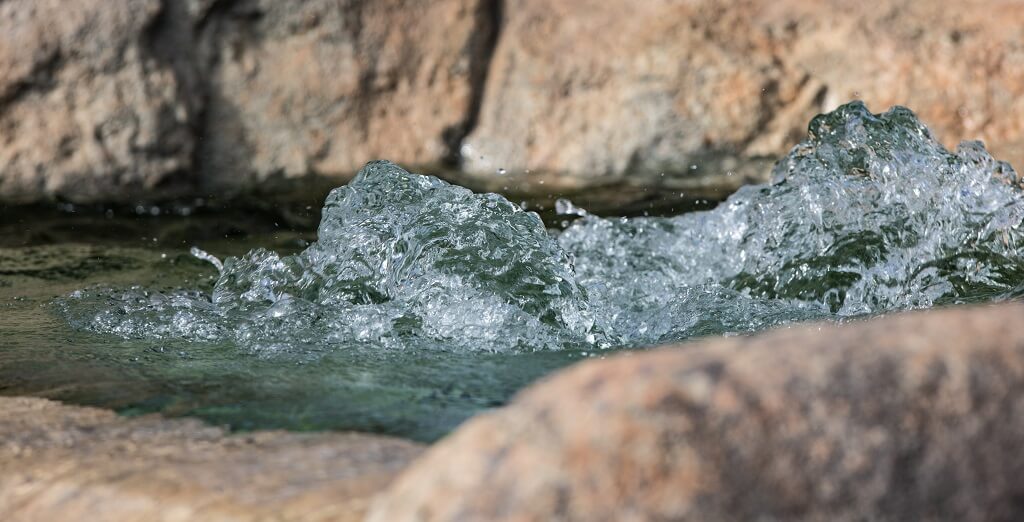Many parts of the world depend on clean groundwater for their water supply. Large-scale studies often overlook the fact that enlarged cracks and fissures allow rapid water flow into groundwater, which is known to transfer short-lived contaminants into the groundwater. In Europe, North Africa, and the Middle East, we measure the rapid transport of contaminants into carbonate rock aquifers. We show that up to 50% of infiltrating contaminants can still reach the water table via rapid transport, which is much higher than what is estimated when rapid transport is ignored. These results suggest that where rapid flow to groundwater occurs, the risk of contamination of usable aquifers is much higher than expected.
What is groundwater contamination?
groundwater contamination is the phenomenon of human activities altering the chemical composition, physical properties, and biological characteristics of groundwater, resulting in deterioration of quality, is known as groundwater pollution.
Groundwater flows extremely slowly, and the layer beneath the surface is complex. As a result, groundwater pollution is a slow-flowing problem that is difficult to detect and control. Even if the source of pollution is completely eliminated, it takes decades, if not centuries, to restore water quality once contaminated. The problem of artificial recharge of underground aquifers is more complex.
What are the sources of groundwater contamination?
Water is particularly vulnerable to contamination because it is a universal solvent, which means it can dissolve a wide range of substances. While this ability is beneficial in the kitchen, it is not ideal in toxic environments. Toxic substances can enter and dissolve in groundwater from a variety of sources, resulting in widespread water contamination. Below is a listing and explanation of some of the most common toxic substances and sources of pollution:
Domestic sewage and waste can contaminate groundwater with pathogens and increase chloride and nitrate content, total hardness, and total salinity.
Hazardous waste landfills release leachate or other pollutants into the environment and pose a threat to surface and groundwater.
Concentrations of organic and inorganic compounds in groundwater can be elevated by industrial effluents and wastes.
Fertilizers and farm manures used in agriculture can drastically increase nitrate levels in groundwater. Pesticide contamination of groundwater is minimal and occurs mainly in shallow layers. Agricultural activities can contribute to the oxidation of soil organic matter, for example, by converting organic nitrogen to inorganic nitrogen (mainly nitrate nitrogen), which then enters groundwater via leachate. Natural salt water, for example, contaminates underground natural fresh water.
What are the features of groundwater contamination?
The layer under the surface is complicated, and groundwater flows slowly. As a result, groundwater pollution is a slowly spreading problem that is difficult to detect and control. Once groundwater is contaminated, it takes decades, if not centuries, to restore water quality, even if the source of the contamination is completely eliminated. The problem of artificial recharge of underground aquifers is more complex.
There are some clear differences between groundwater and surface water pollution: Pollution is often gradual, as contaminants enter and move slowly through the aquifer, making it difficult to detect in time without special monitoring. Groundwater pollution, on the other hand, is difficult to clean up. After eliminating the source of pollution, surface water can be cleaned up in a short time. In the case of groundwater, pollutants that have entered the aquifer have long-term negative effects even after the source of pollution has been eliminated.
What are the side effects of groundwater contamination?
The health of people who drink polluted groundwater is at risk. Fluoride and chloride in drinking water cause lesions in human organs and contribute to the development of various cancers; consumption of contaminated water, such as sulphate, leads to cardiovascular, cerebrovascular, and audio vascular diseases; the probability of developing diseases of the reproductive system has more than doubled; drinking water contaminated with heavy metals can cause neurological or digestive problems.
Long-term irrigation with polluted groundwater hardens the soil and makes it impossible to grow crops. As a result of the uptake of pollutant factors, plants reduce their production or even die, which indirectly affects the health of people, livestock and aquatic organisms.
Pollution increases the hardness of groundwater, reduces the durability of equipment in the production process and increases the cost of water softening.
What is groundwater remediation?
Any natural water that exists below the surface is called groundwater. It is most commonly found in rock fractures, in water-bearing permeable rock, or in unconsolidated materials known as aquifers in subsurface strata or underground. Groundwater is susceptible to pollutants such as chemicals, road salt, oil, gasoline and because it is in this dormant state. Since groundwater provides up to 40% of the world's drinking water, it is important that these areas be treated, and contaminants removed and converted to harmless products. This process is called groundwater remediation.



